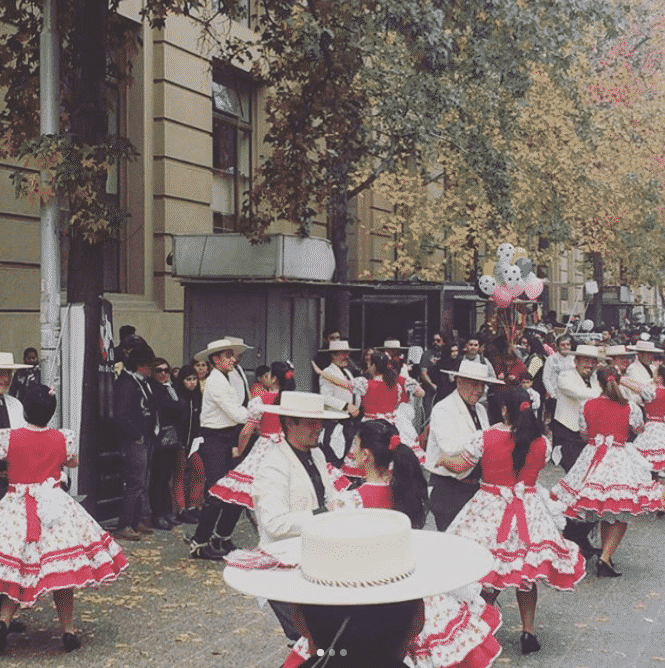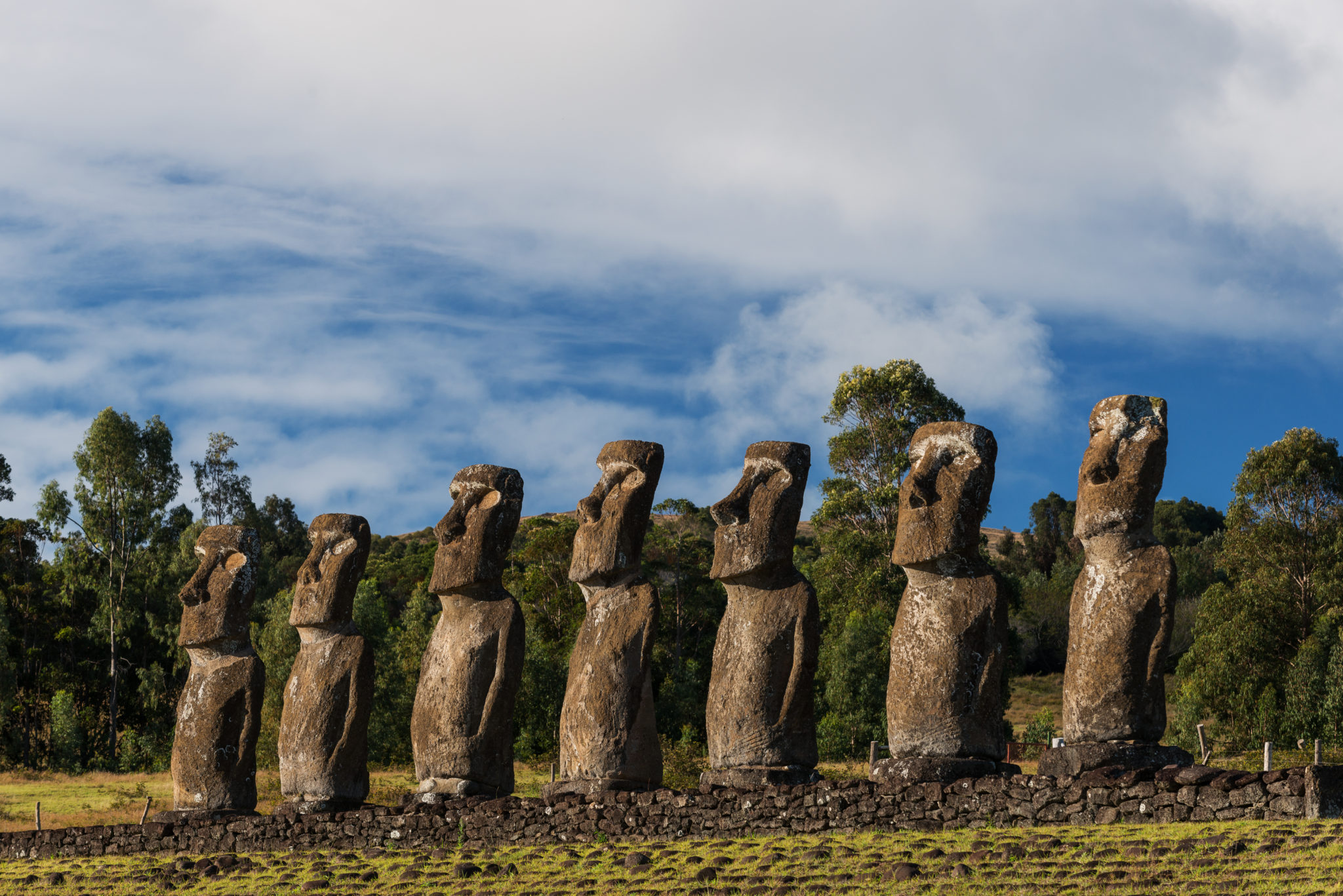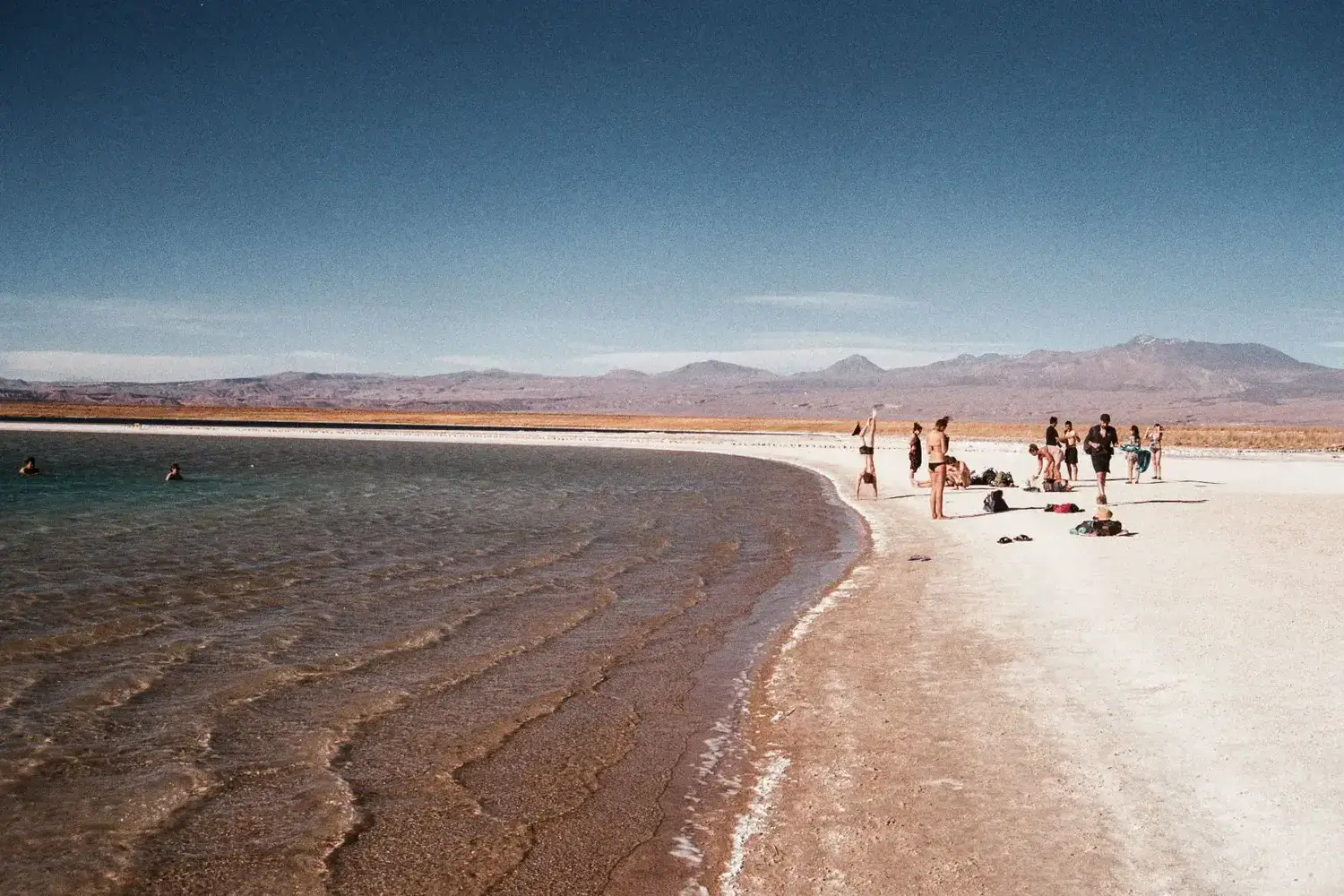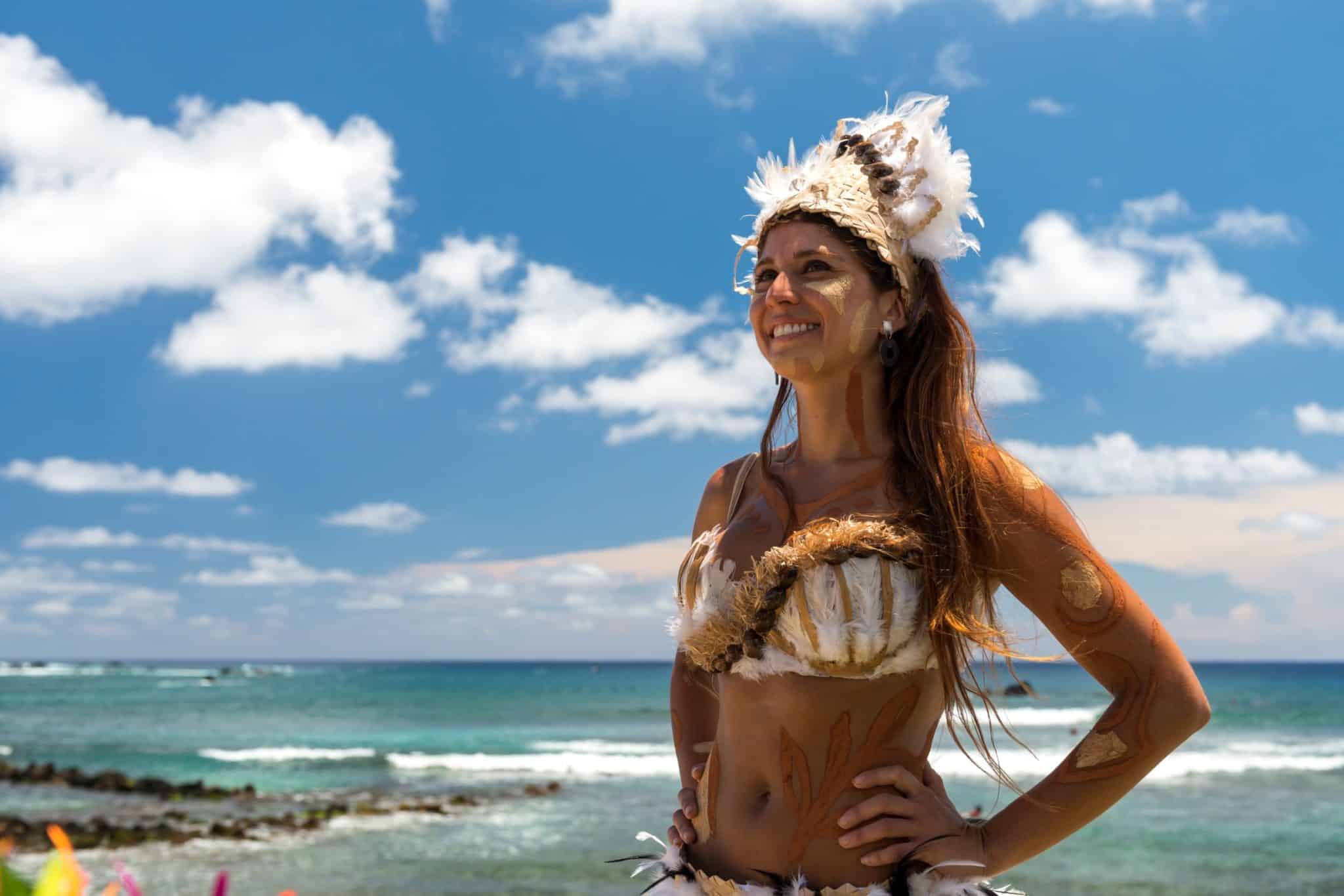Are you preparing your trip to Chile but wondering when you should go?
Do you need to follow the school holidays and do not know if they correspond with the ideal time of year to visit Chile?
Do you dream of whale watching but don’t know when the right time to observe them is in Chile?
Then you’ve come to the right place… this article is for you!

When to travel to Chile:
The best months and seasons to explore
On the program for this guide, you will discover the best tips to choose your ideal time to travel to Chile. A quick look at what we’ll cover:

The climates of Chile
Before I get to the heart of the matter, let’s discover Chile and its characteristics together. It is important to understand that Chile is a long and narrow country, and that it is located in the very south of the southern hemisphere.
As a result, the seasons of this “country at the end of the world” are the opposite of North America and most of Latin America. Here, winter runs from June to August and southern summer from November to January. But the elongated shape of Chile also offers another peculiarity: its climate! In fact, this country alone contains 6 different climates!
From North to South you will find these distinct climatic zones:
- Desert: in the far north and the Atacama Desert (the driest in the world!)
- Semi-desert: in Norte Chico, including Copiapo, La Serena and Elqui Valley
- Mediterranean: in the central region, including Santiago and Valparaíso
- Temperate rainfall: in the lakes region and Chiloé, including Castro and Puerto Varas
- Cold and rainy: in Patagonia and up to Tierra del Fuego
- Subtropical: in the Pacific, on Easter Island and the Juan Fernandez Archipelago (Robinson Crusoe)
It should also be noted that the Chilean coasts, as in Portugal, are crossed by the Humboldt Current, a cold sea current that makes swimming refreshing all year round.
Now that you know the basics of Chile’s climate, let’s move on to our detailed analysis of the best times to go on vacation to your most highly anticipated destinations!

The best time to go to the North of Chile
The Atacama Desert is one of Chile’s bucket list destinations. We will group it with the Extreme North (Arica, Putre, Iquique) and the Norte Chico (Copiapo, La Serena, Elqui) to speak generally about the north of Chile.
Temperature of northern Chile
The temperature in northern Chile ranges from 34 degrees Fahrenheit to 80 degrees Fahrenheit all year round. The nights can be cool but it almost never rains (this is the advantage of the desert!). For those who want to venture into the peaks and volcanoes of Atacama, which can climb above 20,000 feet, you will find colder temperatures, especially at night. You will even sometimes find snow at high altitudes. Here, it is not uncommon for temperatures to drop below 32 degrees in winter during the night. On the site of the geysers, in the middle of winter and before sunrise, the thermometer often displays -5 degrees. But don’t worry, once the sun rises, the feeling of extreme cold dissipates quickly.
The ocean temperature in the northern region remains fairly stable between 65°F and 73°F.
Ideal season for a holiday in the North of Chile
Thanks to its sunshine and pleasant temperatures all year round, it is possible to visit the North of Chile at any time during the year.
However, there is a special phenomenon in the Atacama Desert called the altiplanic winter, or “invierno Boliviano” during the austral summer of Chile. For a few weeks, the humid air masses coming from the Amazon (at that time in the middle of the rainy season) turn into precipitation once they cross the Andes mountain range and come in contact with the hot and dry desert air. The altiplanic winter is unpredictable and can occur between late December and mid-March. In recent years, the phenomenon has occurred almost every year, with a peak in February. A good local guide will be able to find you activities adapted to the situation, but it is still better to avoid the risk if your dates are flexible.
Our favorite months to visit the Atacama Desert, northern Chile, and the Uyuni Desert in Bolivia are September, October, November, early December, mid-March, April, and early May.
The ideal period for astronomy in Chile

Astrophysicists or amateur astronomers will find themselves in paradise because the sky of the Atacama Desert is one of the purest in the world. However, there are still seasons to favor to guarantee the best conditions for observation. Ideally, it is better to avoid January and February, the riskiest months of the altiplanic winter, which cause unstable and cloudier weather conditions.
The season from April to September is perfect for observing the brilliant Milky Way. Even if the Southern Cross is not visible all year round, know that each month presents its own variety of special features to observe.
We also recommend that you consult a lunar calendar to confirm that your visit does not coincide with the full moon. In fact, tours are not offered 7 days before and 7 days after the full moon because this period is not conducive to astronomical observation due to the moon’s brightness. That being said, the sight of the moon rising over the Andes mountain range is a majestic spectacle in its own right!
Ideal time for animal observation in Atacama
Despite the misconceptions that we might have about the desert (e.g., that the desert is devoid of life), the arid north of Chile is filled with fauna and flora adapted to this environment! For nature and animal lovers, the ideal season to observe them is during summer (January-February). But you can find animals all year round.
Three species of pink flamingos–Andean flamingos, Chilean flamingos but also James’ flamingos– are numerous during the austral summer!
With a little luck you can also capture photos of South American gray foxes and viscachas (visaches), a kind of cross between a rabbit and a chinchilla.
The Atacama Desert is also filled with guanacos, vicuñas, and other llamas and alpacas, wild or domestic.
Best season for hiking in Chile
Hikers will particularly appreciate the North outside the altiplanic winter. We also suggest choosing spring (November-December) to enjoy a warmer night of camping.
Dates of the annual festivities of northern Chile
If you want to visit Arica, you may be interested in coordinating your plans with the date of the Andean Carnival of Arica! The celebration of the “Force of the Sun” brings together nearly 16,000 dancers for 3 days of festivities in early February. Find the exact dates on the website of the city of Arica.

At the very beginning of spring, i.e. September, you may get the chance to discover the flowering desert in the region of Copiapo. The phenomenon requires special weather conditions (depending on rain and temperature), so you will have to cross your fingers… or ask your travel agent what the forecast is for this year.
Now that we have explored the most important factors to take into account to choose when to take your trip to the north of Chile, let’s head down to the South!

Best season to go to the South of Chile
Did you know that the South is ideal for making a combination trip of Chile and Argentina? So you can explore the south of Chile and Argentina, discover the glaciers, and travel through the lands of explorers. But before leaving, you must take into account some climatic characteristics, specific to each region.
The lakes region and Chiloé promise you grandiose landscapes, but also plenty of rain.
In Chilean or Argentine Patagonia, you have to pay close attention to snow and cold. Especially since you are never safe from a sudden change in climatic conditions.
In Tierra del Fuego and up through Cape Horn, the weather is even more harsh and uncertain. It is truly THE destination where correctly choosing the dates of your trip is essential.
Temperature of southern Chile
The following section is for those who want to talk “numbers” to prepare their trip (for those who just want to know whether or not they have chosen the right season for Patagonia, go directly to the next paragraph). Here is an overview of the temperatures and precipitation of southern Chile and Argentina:
- In the lakes region (Valdivia, Pucon, Puerto Varas) temperatures in winter range from 40°F to 50°F and in summer from 50°F to 75°F. The average precipitation is 20 rainy days in winter and 10 days in summer. The water temperature is about 60°F all year round.
- The Chiloé archipelago has an average temperature of 40°F to 66°F.
There are about 10 rainy days a month, almost all year round. The water temperature on the island hovers around 50 degrees Fahrenheit on average. It is therefore not recommended for those who are intolerant to the cold or for those whose consider “sun” a crucial ingredient in their vacations.
- Chilean and Argentine Patagonia experience temperatures from 30°F to 60°F in summer. It rains on average 8 days a month. You can forget about swimming, since the water never exceeds 50°F.
- In Tierra del Fuego, the thermometer rarely changes to negative but almost never passes 50°F either (which can be appealing). It rains an average of 14 days a month, especially in summer when the cold is milder. It goes without saying that swimming is not recommended in these icy waters.
Ideal time to go to the South of Chile and Argentina
To visit Patagonia, the rule is to leave between late spring and early autumn. The ideal period is therefore from the end of November to the beginning of March. It is during this season that sailing, cruises, and other water activities such as kayaking are available!
If you have the option I advise you to visit Patagonia and the South in general in January. In the middle of summer before the Chilean school holidays, you will have the best possible weather and find fewer tourists than in February (note that December and March are also decent options).
To reach the extreme south, Cape Horn, or Tierra del Fuego, also favor the middle of summer, December to February. During this season, you will have warmer days (about 50 degrees). You will especially avoid the waves of frigid polar cold that arrive from April to September.

Perfect period for animal observation in Patagonia
Blue whales, pumas, condors, king penguins, or condors, the south of Chile and Argentina is filled with a rich diversity of land and marine wildlife. To observe your favorite animals or go on a photo safari, it is important to know the ideal period.
As a general rule, to observe the largest variety of animals, it will be necessary to choose the summer or autumn season.
But since each species has a distinct lifestyle, to see some Patagonian animals–whether in the parks on the mainland or in Tierra del Fuego–you must follow their calendars.
Whales and orca
Southern right whales are found in Patagonia, especially on the Argentine side, from early June to mid-December.
Humpback whales and blue whales are visible from December to May, particularly on Carlos III Island.
The white whale can be observed in December, March, and April.
At the same time, you will also find orca.



Penguins
The penguin season generally extends from September to April. This is their nesting period.
Papuan penguins are visible from September to April.
Magellanic penguins can be observed from September to May.
And the king penguin stays in Tierra del Fuego all year round.
Throughout the year you will find the following animals:
- Sea lions, always present on the shores of Valdivia
- Dolphins, especially during ferry crossings
- Pumas, with a little luck, patience, and the right location (Torres del Paine is one)
- Andean condors, the iconic animal of Chile
- Huemul, a kind of Andean deer, which is an endangered species and therefore rare to see
- Guanacos, found on the Patagonian praires
Best season for hiking in Patagonia
A word of advice to hikers: also prefer the austral summer (December to February) for your trekking, especially if camping in a tent, to enjoy milder nights and gentler conditions. November and March are also doable, with a few degrees less of warmth and a more unpredictable sun.
Dates of the annual Patagonian festivities
Athletes will be able to add to their trip extraordinary experiences such as the Patagonman or the Navarino Trail that takes place in December on the southernmost island of Chile.
Now that you are an expert on all things Patagonia, let’s move on to the Pacific Islands!

When to travel to Easter Island and Robinson Crusoe Island
Easter Island, like the Juan Fernandez Archipelago (Robinson Crusoe Island), lies in the middle of the Pacific.
Temperature of Isla de Pascua (Easter Island)
Its location allows Easter Island to have a rather tropical and pleasant climate all year round. The weather varies between 60 degrees and 82 degrees all year round. The hottest months are January and February. Keep in mind the humidity, however; it is high all year round but it reaches 80% in summer!
On the island of Robinson Crusoe (yes, it really exists, and is off the coast of Chile), the thermometer drops a few degrees. The highs do not exceed 77 degrees and the lows can venture down to 54 degrees.
Our favorite time to go to Easter Island
The ideal time to travel to this Polynesian island is from November to May. Sun and swimming await you to pepper your cultural holidays with relaxing moments.
On the Juan Fernandez Archipelago (Crusoe) I recommend you focus on the austral summer, so January or February, to ideally enjoy the beach and the sun.
Dates of the annual festivities on Easter Island


If you plan in advance and are up for a little more revelry and noise, you can also visit Rapa Nui during its most important festival: tapati. The festival is held the first two weeks of February every year. It’s an amazing once-in-a-lifetime experience! Discover all the details of this exceptional holiday in our travel guide to Easter Island, located in our destination menu.
If you want more tips for organizing your trip to Chile, check out our blog post.

When to visit the central region of Chile
The central region of Chile encompasses both the capital of Santiago de Chile and the coastal city of Valparaíso. You will also find the wine valley of Casablanca, the seaside town Viña del Mar, and ski resorts.
Temperatures in the central region
This region has a climate closer to the northern or midwest regions in the U.S.: long hot summers and cold and rainy winters. Temperatures in summer average 68 to 86 degrees Fahrenheit. In winter, the weather drops to around 45 to 60 degrees. Spring and autumn are less and less distinctive in recent years, but normally offer pleasant, sunny mid-season weather for a short period of time.
Best season for relaxation in Chile
Beach lovers will want to arrive in summer (December to February) to enjoy the coast in Pichilemu, Viña del Mar, or Ritoque. There are many secret corners on the coast to enjoy water activities such as surfing, stand-up paddle, or swimming. But be careful, the water is cold all year round, and watersports are generally done in a wetsuit.
Best time to ski in Chile
Chile is the winter sports capital of South America. The entire continent comes here to enjoy the many peaks and its good facilities. Chilean skiers have little need to explore slopes outside their country.
Ski and snowboard enthusiasts will prefer winter (July-August) to practice winter sports in the central region. On the mountains close to Santiago are these unmissable ski resorts: Valle Nevado, Portillo, El Colorado, Farellones or La Parva. Skiing one hour from a metropolis, and enjoying a good barbecue on your way home… you can’t find that everywhere!
But we can’t neglect to tell you about the ski and snowboard resorts of southern Chile, which are also superb. It is possible to enjoy the snow on the volcanoes Osorno, Villarica or Chillán. Natural warm thermal baths are close to these ski resorts, which is another attractive bonus for winter sports enthusiasts.

Wine season in Chile
As Chile is renowned worldwide for its wines, sommeliers will be able to discover the many vines and grape varieties all year round.
But you can also join the harvest festivals that take place in March. The vendimia fiestas promise you unique tastings, traditional Chilean dances, and also grape crushing competitions. It is one of my favorite moments of the year! Locals find autumn to be the most beautiful season to travel the wine route as the glowing colors of the vineyards are beautiful and add a lot of charm to the tours.
Another important date not to be missed in Chile:
On September 18 and 19, the fiestas patrias take place. This is the Chilean Independence Day and is celebrated throughout the country and offers memorable experiences.

You can also taste the traditional cocktail terremoto: it’s a potent blend of white wine with pineapple ice cream and grenadine.
Now you have everything you need to know about when to travel to Chile! Still have questions? Ask us in comments, and we will gladly respond!
Do you have doubts about the length of your Chilean holiday? Don’t panic, you will find all the necessary information in this article.
See you soon in Chile with the advice of Travel Coach Chile!





